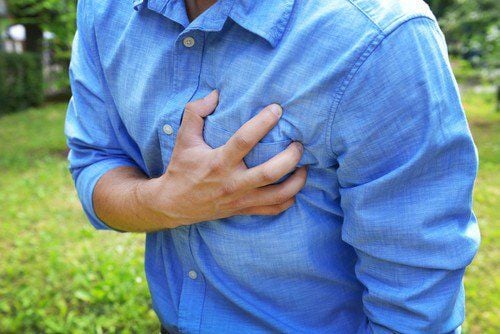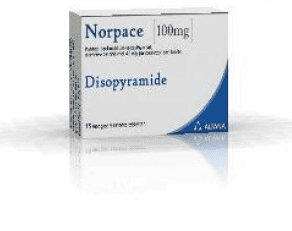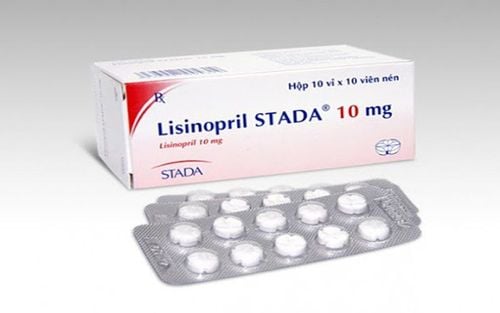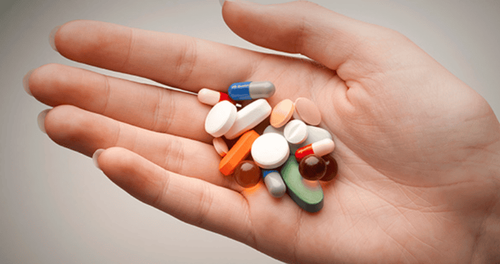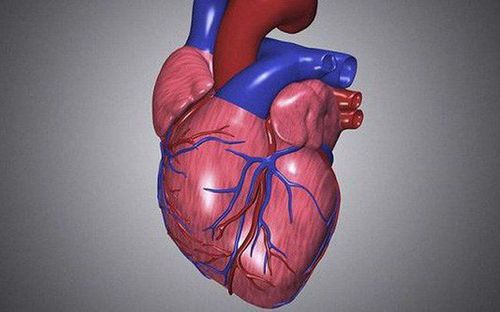This is an automatically translated article.
The article is professionally consulted by Master, Doctor Cao Thanh Tam - Cardiologist - Cardiovascular Center - Vinmec Central Park International General Hospital.Supraventricular tachycardia (SVT) causes the heart to beat at an abnormally fast rate. Common outward symptoms include palpitations, dizziness, and shortness of breath.
1. What is supraventricular tachycardia?
Supraventricular tachycardia (SVT) is a common heart rhythm disorder that causes an abnormally fast heart rate.When supraventricular tachycardia occurs, the heart rate no longer beats under the control of the sinus node - the body's natural heart rhythm control center. Instead, a different rhythm with a faster frequency from a different location takes the place of the sinus rhythm. This new pulse originates somewhere above the ventricles, and from there it propagates down to the ventricles. There are three main types of supraventricular tachyarrhythmias as follows:
AV nodal re-entry tachycardia: This is the most common type of supraventricular tachyarrhythmia. It is most common in people in their 20s and 30s, and more women than men. Atrioventricular nodal re-entry tachycardia occurs when there is a localized loop of re-entry within the AV node, and the abnormal electrical impulse propagates along this re-entry loop. Atrial tachycardia: Starts in a small area of tissue in the atria, which is the site of the abnormal electrical impulse that causes the heart to beat to this pulse (much faster than a normal heartbeat). Wolff-Parkinson-White syndrome (WPW syndrome).
2. What are the symptoms of supraventricular tachycardia?

Heart rate can go up to 140 - 200 beats/min, or even faster (normal heart rate is only 60 - 100 beats/min). Feeling of palpitations. Dizziness, or a feeling of lightheadedness or lightheadedness. Feeling short of breath. Sometimes there is a slight discomfort in the chest. If you've had angina in the past, supraventricular tachycardia may trigger the onset of angina. An episode of supraventricular tachycardia can be sudden, with or without a trigger. These attacks can last from a few seconds, minutes, even hours (but rarely much longer), then suddenly disappear on their own or after intervention (with or without medication). by drugs).
3. What are the risk factors for supraventricular tachycardia?

Certain medications, eg some asthma inhalers, some cold medicines. Caffeine. Alcohol. Stress or negative emotions. Smoke . Avoiding risk factors for the onset of supraventricular tachyarrhythmias will reduce the incidence of supraventricular tachyarrhythmias.
4. What is the treatment for supraventricular tachycardia?
Many episodes of supraventricular tachycardia will soon end on their own without any intervention. Sometimes an episode of supraventricular tachycardia can be stopped in a few simple ways, like drinking a glass of cold water, holding your breath, or soaking your face in cold water. If an episode of supraventricular tachycardia persists or is severe, hospitalization should be initiated as soon as possible to intervene to terminate it. Intravenous drugs can be used to terminate episodes of supraventricular tachycardia, and Adenosine is the drug of choice. If there are contraindications to Adenosine or Adenosine is ineffective, Verapamil is an alternative. Electroconvulsive shock is sometimes used to terminate an episode of hemodynamically affected supraventricular tachycardia (causing hypotension...). Preventive measures include:If episodes of supraventricular tachycardia occur infrequently, are short in duration, and have few symptoms, treatment may not be necessary, just limited Reduce risk factors for triggering attacks. Using drugs to treat: Drugs such as digoxin, verapamil, beta-blockers, ... are drugs that can be selected. If one drug does not work or causes unwanted effects, the patient can use another drug. Catheter destruction, catheter ablation: a catheter is passed from the femoral vein into the heart chamber, the tip of the catheter is capable of destroying a small portion of heart tissue that is the site of the onset or onset of irritation. abnormal electrical impulses. In order to effectively treat symptoms and prevent cardiovascular disease, the cause must first be clearly identified. At the same time, to keep the patient's psychology at ease, the patient can practice meditation and yoga to balance the body and control emotions. Cardiovascular disease is often silent but causes serious consequences. Cardiovascular screening helps to detect and treat promptly before it is too late. Vinmec International General Hospital now has a Cardiovascular Screening Package - Cardiovascular Basic Examination, which helps detect cardiovascular diseases even when there are no symptoms, from which to have early treatment methods to bring optimal results. superior.
Master - Doctor Cao Thanh Tam has many years of experience in diagnosing and treating cardiovascular diseases; Performing transthoracic echocardiography in the field of internal medicine and interventional Cardiology; Perform other non-invasive functional investigations in the diagnosis and treatment of cardiovascular diseases. Currently working as a cardiologist at Vinmec Central Park International General Hospital since November 2015.
Please dial HOTLINE for more information or register for an appointment HERE. Download MyVinmec app to make appointments faster and to manage your bookings easily.





